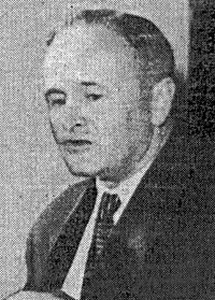Pancherz, Hans-Joachim
WWII: Junkers Test Flight Unit
Hans-Joachim Pancherz was one of IFM test pilots during WWII. He flew first the Junkers Ju 290 on 16.07.1942 and the Junkers Ju390 on 20.10.1943. In February 1945 Pancherz also flew the rocket aircraft Junkers Ju 248
Plauth, Karl
( * 27. Aug. 1896 01. Nov. 1927 )
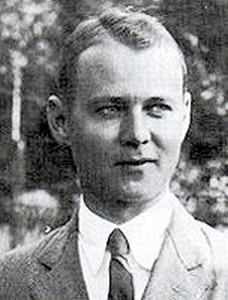
1923 - 1927 Junkers Main Office
Karl Plauth was member of the Fliegertruppe during WWI with JaSta 51. In 1919 he started his studies at the TH Darmstadt in the field of engineering. At the Academic Flight Group of the TH Darmstadt, Plauth designed three glider planes during 1920 and 1921. In March 1923 he joint Junkers Flugzeugbau. Since 1925 he was engaged at the Main Office of Prof. Junkers. Plauth supported Zindel in the design of the Junkers Ju22 for Russia. A very innovative design of Plauth himself was the Junkers A48. It was the first post war Junkers aircraft with smooth metal surface. With that design Plauth generated the principle knowledge about dive bombers, which were later used on the Ju87 design. On November, 1st 1927 Karl Plauth, who was also a sport pilot, crashed with an A32 during artistic flights and died.
Pohlmann, Hermann
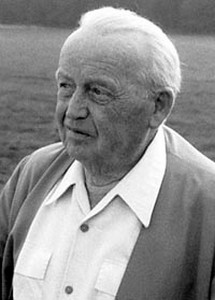
1923 - 1940 Junkers Design Office
n early 1914 Pohlmann visited the flight school of Hans Grade and during WWI he joined the German Air Force. Hermann Pohlmann was a bomber pilot during WWI. After WWI Pohlmann studied ship design techniques and later joined the Junkers Flugzeugwerke in 1923, where he started his work on the engine cowlings of the Junkers G23. While most of the designs at Junkers Flugzeugwerke during the twenties were developed by Ernst Zindel and Otto Mader, Pohlmann was responsible for the design of the famous W33/W34 aircraft, which had been developed from the F13. He was also supporting the designs of Ju46 (designed with Ernst Zindel), the A48/K47 (together with Karl Plauth), the Junkers A50 (together with Arntzen) and finally the Junkers Ju60. Pohlmann also developed initial designs for the Junkers G38 before Zindel himself took over the development authority. Pohlmann was responsible for development of Ju60 airliner. Already in 1928 Pohlmann was engaged in the development of a dive bomber Junkers K47, which laid the foundation for the later development of the Junkers Ju87 also designed by Pohlmann. In 1940 Pohlmann left Junkers and went to Blohm + Voss, where he was engaged in the BV222 and BV238 design. After WWII Pohlmann left Germany and went to Spain, where he joint CASA in 1950. In 1959 again Pohlmann went to Hamburg and joint Hamburger Flugzeugbau GmbH, the former Blohm + Voss facility, as its technical director. Pohlmann retired in 1968.
Prautzsch, Konrad
1924 - ???? Junkers Maintenance Nuremberg
Konrad Prautzsch was the head of the Junkers maintenance base at Nuremberg Fuerth in 1924. As the Junkers G24 was to large for the small Dessau air field, the first flight of a G24 had been organised at the Nuremberg airfield by Prautzsch.
Preuschen, Reinhard
during WWII: Ju288 Design Team
Reinhard Preuschen joint Junkers and became responsible for the Junkers Ju288 developement.
von Prondzinsky, Stefan
1922 - 1924 Junkers Research Institute
1924 - 1926 Junkers Fili Plant
Stefan von Prondzinsky joint the Fliegertruppe during WWI and became the first aircraft pilot to appear at the U.K. skies in 1918. In 1920 he made his private studies regarding aircraft designs and took a patent on wing designs. In 1922 Prondzinsky joint the Junkers Research Institute. As a trial engineer he was engaged in wind channel design questions. In 1924 Prondzinsky went to Fili as a test pilot for Fili built aircraft. In 1926 he returned to Germany and left Junkers for the DVL, where he later crashed with a Heinkel aircraft at Warnemuende.
Ramdohr, Hans Karl
Prof. Reissner, Hans
( * 18. Jan. 1874 + 02. Oct. 1967 )

1908 - 1913 Cunard Developement
Hans Reissner studied construction engineering at Berlin University until 1897. In 1906 Reissner became a professor for mechanical engineering at the TH Aachen. Since 1908 Reissner communicated with Junkers about possible aircraft developements. Reissner developed his first own aircraft, a double wing aircraft, which used steel and textiles. Junkers proposed an aircraft design of corrugated steel metal. Both developed a monoplane aircraft with a cunard layout. The wing of this aircraft already showed the typical Junkers courrugated structure and was made from iron. The aircraft is known as the Reissner cunard plane, but most parts of the aircraft were produced at Dessau at the Junkers & Co factory. In February 1912 this aircraft was first flown by Robert Gsell at Berlin-Johannisthal. The joint venture between Reissner and Junkers led Junkers into the direction of aerodynamic studies and laid finally the first steps for Junkers to enter the field of aviation. Reissner continued his scientific work on aircraft designs during WWI and the following 20s. In 1930 he became the chairman of the German Aviation Comitee. In 1936 Reissner was retired due to political reasons. He continued to work for Argus Motorenwerke as a consultant and in 1938 he left Germany and became a professor at the Illinois Institute of Technology. From 1944 to 1954 he finally worked at the Polytechnic Institute of Brooklyn.
Reuter, Otto
( * 10. Sept. 1886 + 12. Jan. 1922 )
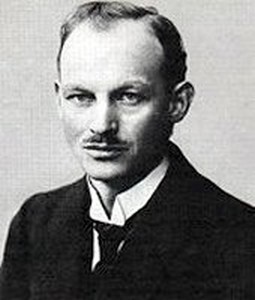
1915 - 1922 Junkers + Co. (later JFA) Technical Director
Otto Reuter joint Junkers & Co. in November 1915 as a technical design engineer. He was engaged in the design of the Junkers J3 and the Junkers J7 aircraft. At the end of WW I, Reuter became the first technical managing director and chief engineer of Junkers Flugzeugwerke AG. Otto Reuter participated in the first steps of the Junkers aircraft designs during WW I and was responsible for the developement of the Junkers F13, Junkers J15 and the Junkers K16, as well as the large scale passenger aircraft Junkers JG1 before he died in 1922.
Riedel, Fritz
( * 7 Jun 1897 - )
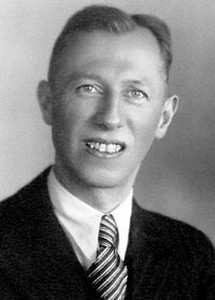
1933 - 1945 JFM Construction Office (Wing)
Fritz Riedel studied Engineering at the Technical Highschool at Aachen. He Joint the Junkers Flugzeugwerke in 1933 and started his work as a a construction engineer at the Prototype construction. He worked under Haseloff and became head of the Wing-Fuselage-Construction Group. He worked on the Ju287.
In 1946 he was sent to OKB-I in Podberesje. After his return in 1954 he Joint the VEB Flugzeugbau Dresden and designed the Center fuselage with wing adapation for the Baade 152. He left VEB in 1961.
Weblinks:
- Flugzeug Lorenz - German Riedel Biography
introduced Mar 2004, transfered 14 Feb 2018
http://hugojunkers.bplaced.net/
contents last updated 14 Feb 2018


